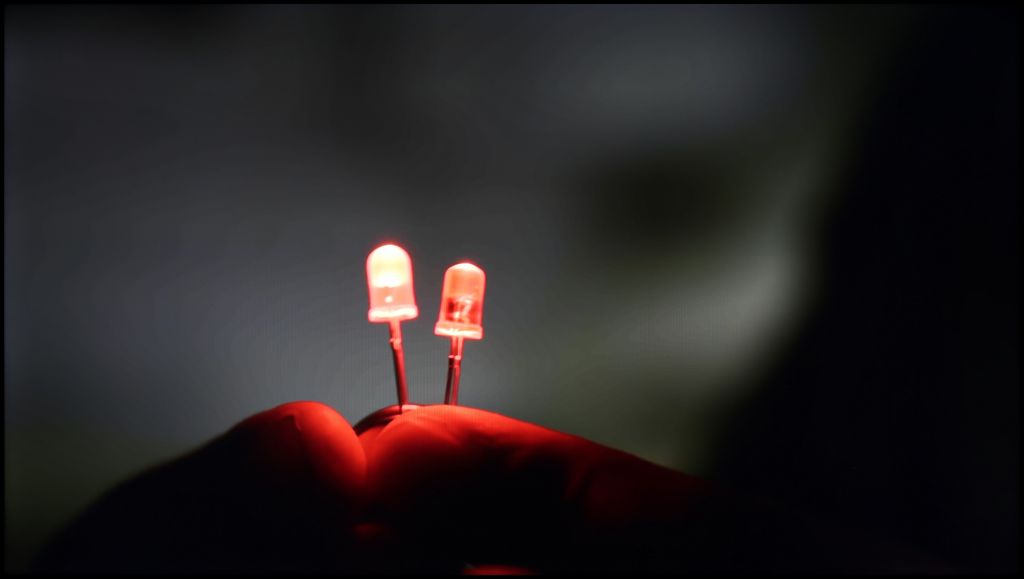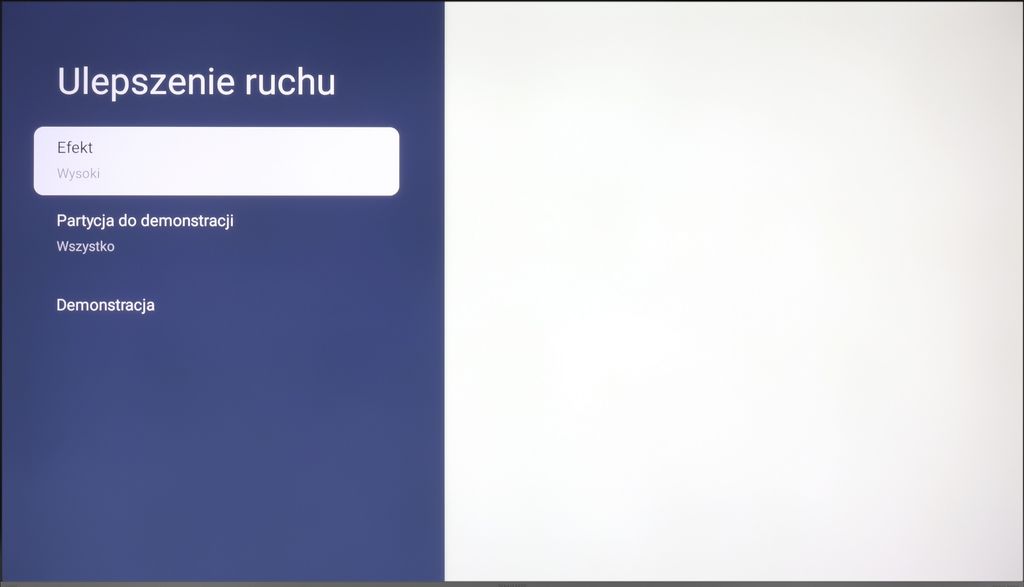QLED 4K UHD Screen: Thanks to Quantum Dot technology, the TV offers vibrant and realistic colors with a resolution of 3840 x 2160 pixels.
Google TV Operating System: Provides access to a wide range of applications and content tailored to the user's preferences.
HDR Support (Dolby Vision, HDR10, HLG): Ensures better contrast and more accurate color reproduction, resulting in a more realistic image.
Dolby Atmos Sound Technology with Harman/Kardon Speakers: Offers immersive surround sound, enhancing the viewing experience.
HDMI Ports: Allow connection of modern devices, offering fast data transfer and support for advanced features.
AQUOS Smooth Motion Function: Improves motion fluidity on the screen, which is especially useful when watching dynamic scenes.
Wi-Fi and Bluetooth Connectivity: Provides a wireless connection to the internet and other devices, increasing the TV's functionality.
DVB-T2/HEVC/H.265 Tuner: Prepared for receiving digital terrestrial television in the new standard.
- Matching (Score)
- Our verdict
- Competing TVs
- TV appearance
- Where to buy
- Contrast and black detail
- HDR effect quality
- Factory color reproduction
- Color reproduction after calibration
- Smoothness of tonal transitions
- Image scaling and smoothness of tonal transitions
- Blur and motion smoothness
- Console compatibility and gaming features
- Input lag
- Compatibility with PC
- Viewing angles
- Daytime performance
- TV features
- Apps
- Playing files from USB
- Sound
- Panel details
Sharp GP6765 Review
Available screen sizes:

Complete the survey to find out the result
Panel type: LCD VA Refresh rate: 60Hz Brand: SHARP Resolution: 3840x2160 System: Google TV Model year: 2024
SHARP GP6765E - Our verdict
5.8
Overall rating
The Sharp GP6765 TV offers a range of positive features that set it apart in its price range. One of the standout aspects is the Google TV system, which provides users with excellent flexibility and comfort when navigating various applications and content. The intuitive interface and integration with the Google voice assistant make using the TV enjoyable and straightforward. With this platform, users can access streaming applications, enabling high-quality viewing of movies and series without needing additional devices.
In terms of picture quality, the Sharp GP6765 impresses, particularly considering its price. It performs exceptionally well in movie scenes, with smooth colour transitions, placing it among the top models in this category. While the brightness isn’t the highest compared to some competitors, it’s still respectable, and the inclusion of Dolby Vision significantly enhances picture quality, improving detail in both bright and dark scenes.
For gamers, the TV offers a major advantage with its low input lag of just 13 ms, ensuring smooth and responsive gameplay. It also provides very good compatibility with computers, supporting Chroma 4:4:4 for excellent text readability and image clarity. However, it’s important to note that the TV uses a 60 Hz panel, which may limit its performance for sports or fast-paced games. Some gamers might also be disappointed by the absence of certain essential features, even though the TV includes HDMI 2.1.
Overall, the Sharp GP6765 is a solid choice that offers a great Google TV system, excellent colour transition smoothness, and low input lag. While it requires some compromises—especially in terms of brightness and features for gamers—it remains an appealing option for those seeking an affordable TV.
Advantages
Presence of Dolby Vision
Very good compatibility with PC
Advanced GoogleTV system
Smooth tonal transitions
Low input lag
Disadvantages
Low matrix brightness
High matrix response time
Lack of full HDMI 2.1 functionalities
Movies and series in UHD quality
6.2
Classic TV, YouTube
6.2
Sports broadcasts (TV and apps)
5.3
Gaming on console
5.8
TV as a computer monitor
6.0
Watching in bright light
3.9
Utility functions
6.3
Apps
9.6
Sound quality
5.4
Complete the survey to find out what fits your preferences
SHARP GP6765E - Competing TVs in this price range
SHARP GP6765E - TV appearance
HDMI inputs: 4 x HDMI 2.0, 0 x HDMI 2.1 Other inputs: RCA (Chinch) Outputs: Toslink (Optical audio), eARC (HDMI), ARC (HDMI), Mini-Jack (Headphones) Network Interfaces: Wi-Fi 2.4GHz, Wi-Fi 5GHz, Ethernet (LAN) 100Mbps
Build quality: Average
Stand type: Legs
Bezel color: Silver








Stand: Fixed
Flat design: No
Accessories: Stand
Buy at the best price
Select size:
SHARP GP6765E - Contrast and black detail
5.7/10
Local dimming function: No

Result
4,950:1

Result
4,650:1

Result
5,450:1

Result
5,300:1

Result
4,550:1
Visibility of details in the lights:

The Sharp GP6765 is equipped with a VA panel, offering better contrast than IPS panels. VA panels deliver deeper blacks and more distinct differences between bright and dark areas, making them a stronger choice for viewing in darker environments. This model uses Direct LED backlighting, which provides even light distribution across the screen. However, the lack of local dimming limits its black reproduction. As a result, during night-time viewings, especially in high-contrast scenes like those in "The Revenant," dark tones may show visible backlight spots. Instead of achieving perfectly deep blacks, the black areas may appear with a slight navy hue. This can impact the visual experience, especially for viewers who prefer watching in low-light conditions.
Halo effect and black detail visibility:
SHARP GP6765E - HDR effect quality
4.6/10
Supported formats: HDR10, Dolby Vision, HLG Color gamut coverage: DCI P3: 92.5%, Bt.2020: 72.5%
Luminance measurements in HDR:

Result
287 nit

Result
317 nit

Result
322 nit

Result
318 nit

Result
323 nit
In movie mode, the Sharp GP6765 reaches a brightness of 300 nits, which is relatively average. This level of brightness is more suited to standard SDR content than to the full HDR experience. As a result, the TV struggles to deliver the depth and dynamics typically expected from a good HDR mode. Visual effects that might appear sharp and detailed on other models could seem more subdued here, and high-contrast scenes won't be as striking. However, compared to other models in this price range, this is still a decent performance. A positive feature is the TV's support for a wide DCI-P3 colour gamut, covering 92.5%, thanks to the inclusion of quantum dots (Quantum Dot/QLED). This offers a solid improvement, particularly in this price bracket, resulting in vibrant and more saturated colours, although the limited brightness still prevents a fully immersive HDR experience.
Scene from the movie “Pan” (about 2800 nits)

Scene from the movie “Billy Lynn” (about 1100 nits)

In demanding film scenes where the brightness far exceeds the capabilities of the Sharp GP6765, the TV unfortunately struggles to showcase its full potential. One of the main limitations is the absence of control over dynamic tone mapping, which could help highlight details in the brighter areas of the image. This becomes particularly evident with bright effects, where the image tends to flatten and lose detail. Additionally, the lack of local dimming means that the contrast between bright and dark elements in the image is noticeably weaker. For instance, in the film Pan, a scene featuring an intensely shining sun appears flat, with the sun merging into a single bright spot, making it impossible to distinguish its shades. A similar effect is visible in Billy Lynn, where fireworks appear as a uniform, bright explosion without defined details. However, the TV does perform well in colour reproduction, with skin tones rendered fairly accurately when the lead actor occupies a larger portion of the frame.
HDR luminance chart:
HDR luminance
The Sharp GP6765 TV struggles with static HDR metadata, as seen in scenes with bright elements, such as one featuring horses on a snowy meadow. In this case, the image blends into a single bright spot, leaving details virtually invisible, with only the horses grazing against the white background being recognisable. The lack of distinction between individual elements in the scene prevents viewers from appreciating the finer details. However, when the same material is displayed in Dolby Vision mode, which uses dynamic metadata, the performance improves significantly. While the image is still not perfect, details like grass or the outline of the forest in the background become more distinct. Dynamic metadata allows for more precise adjustment of brightness and contrast levels in different parts of the image, offering a more realistic viewing experience. This highlights the importance of dynamic metadata, especially in this price category, where TVs often face limitations in brightness and contrast.
Static HDR10

Dynamic: Dolby Vision

Factory color reproduction
5.5/10
The Sharp GP6765 was launched in movie mode, which offers the best settings for colour reproduction. However, despite this, the quality remains far from ideal. In SDR mode, the white balance graph shows significant increases in the red colour, making the image appear somewhat yellowish and distorting natural skin tones. This results in some scenes looking unnatural, and colours losing their authenticity. In HDR mode, the issue worsens as blue becomes the dominant colour, which negatively affects the colour balance and causes a loss of detail in cool tones. As a result, the image can appear cold and unbalanced, highlighting the TV's inability to achieve optimal colour reproduction. Tests with the Colour Checker tool confirm these shifts across several samples.
In terms of contrast, the HD mode shows a significant jump at the start of the graph, but it remains close to the reference line at 2.4. This means that in most scenes, the TV delivers a satisfactory level of contrast, enhancing details in shadows and adding depth to the image. However, in HDR mode, the EOTF curve fluctuates significantly at both ends of the graph, leading to inconsistencies in bright and dark areas of the image. In scenes with intense light, such as explosions or dynamic actions, key details may be lost, and the image may appear blurry. Similarly, in darker scenes, the lack of clear differences in shades may cause details to merge into a uniform spot, reducing overall quality. While movie mode offers the best factory settings for the GP6765, there are still significant issues with colour reproduction and contrast.
Color reproduction after calibration
7.8/10
After calibration, the Sharp GP6765 television shows marked improvement in film mode, particularly in SDR content. The white balance now closely aligns with the reference line, offering more natural and true-to-life colour reproduction. While not perfectly straight, the results are still satisfactory for the price range, significantly enhancing the overall visual experience and immersion in movies. The colour gamut shows some improvement, with the initial jump in the graph persisting but being less noticeable, leading to a more consistent and enjoyable image.
For HDR content, while the white balance performs somewhat worse than in SDR, it is still a notable improvement compared to pre-calibration. The calibration ensures better colour consistency, though some shortcomings remain. As for contrast, no major gains were observed. The lack of control over dynamic tone mapping prevented significant improvement in EOTF, resulting in uneven brightness reproduction.
Despite some limitations, particularly in HDR content and dynamic tone mapping, the Sharp GP6765 reveals a more polished performance after calibration. The improved white balance and colour reproduction in SDR make it more visually appealing. While further refinement is needed, it still provides a satisfying visual experience, making it a strong contender in its price category.


SHARP GP6765E - Smoothness of tonal transitions
9.3/10
The fluidity of tonal transitions is one of the standout features of the Sharp GP6765 television. This model excels in this area, ensuring that immersion is never disrupted by poor colour transitions. In the tested film scenes, no significant issues were noted with the smooth shift between darker and lighter shades. Such effective colour-tone reproduction places this TV among the best available, particularly in terms of colour gradation. As a result, viewers can enjoy a more immersive and visually pleasing experience.








Image scaling and smoothness of tonal transitions
6.6/10
Smooth transition function

Image without overscan on the SD signal

The Sharp GP6765 television delivers solid performance with its "10-bit colour reproduction" feature, particularly in the tested scene featuring light bulbs. Setting this option to "medium" provides satisfactory results, with no issues related to grain smoothing or the blurring of important image elements. Even the "low" setting performs well, delivering a clear image without compromising detail. These transition smoothing options enhance visual quality by providing more natural colour transitions.
In terms of image scaling, the Sharp GP6765 shows strengths, such as the absence of overscan when displaying test material. This ensures viewers can enjoy the full image without losing edge details. However, some weaknesses were noted in a tested scene featuring a model. Elements such as branches or trousers appear slightly jagged, indicating a lack of effective edge-smoothing techniques. This can cause certain details to look distorted, impacting the overall viewing experience.
SHARP GP6765E - Blur and motion smoothness
4.6/10
Maximum refresh rate of the panel: 60Hz
Film motion smoothing option: Yes
Blur reduction option: No
BFI function 60Hz: No
BFI function 120Hz: No

When it comes to motion blur and movement fluidity, the Sharp GP6765 TV offers rather average performance. Equipped with a 60 Hz panel, it handles movies adequately. The TV includes a motion smoother called "Motion Enhancement," which allows users to control motion fluidity, enabling a choice between visible film frame interpolation or a smoother, more theatrical appearance. This feature should meet the needs of most users focused on movie viewing.
However, the TV's performance falls short in sports or gaming. In the tested UFO alien scene, noticeable blurriness indicates that the panel's low response time negatively impacts the sharpness of moving objects. This issue becomes particularly evident during dynamic sequences, where rapid movements are frequent. For viewers who enjoy sports or fast-paced video games, these limitations in motion handling can be off-putting, making the Sharp GP6765 less suitable for such content.
Blur (native resolution, maximum refresh rate):



SHARP GP6765E - Console compatibility and gaming features
3/10
ALLM: Yes
VRR: No
VRR range: No
Dolby Vision Game Mode: Yes, high input lag
Correct implementation of HGIG: No
1080p@120Hz: No
1440p@120Hz: No
4K@120Hz: No
Game bar: No


The gaming functionality of the Sharp GP6765 leaves much to be desired. Although this model includes HDMI 2.1 ports, which theoretically promise modern features, the reality is far less impressive. The only feature that takes advantage of this standard is Auto Low Latency Mode (ALLM). Unfortunately, the absence of key functionalities such as Variable Refresh Rate (VRR) and HDR Gaming Interest Group (HGIG) significantly limits its appeal to gamers. VRR is crucial for eliminating screen tearing and stuttering, particularly in dynamic games where fluidity is essential. Similarly, HGIG ensures optimal HDR mapping, enhancing visual quality and immersion. While Dolby Vision might seem like a benefit, it proves useless for gaming due to the very high input lag in this mode.
The inclusion of HDMI 2.1 ports in the Sharp GP6765 feels like a marketing ploy, potentially misleading users into believing that the standard automatically provides all its associated benefits. Gamers expecting full functionality from HDMI 2.1 are likely to be disappointed.



SHARP GP6765E - Input lag
8.6/10
The Sharp GP6765 excels in input lag, achieving impressive results in both SDR and HDR modes. With an input lag of just 13 ms, this television is well-suited for gamers prioritising quick response times and precise control. Such low input lag ensures smooth, seamless gaming experiences, which are essential in fast-paced scenarios.
However, the Dolby Vision mode falls short for gaming purposes, with an input lag of 120 ms. This is substantially higher than the other modes and can result in noticeable delays, particularly frustrating during action-packed or racing games. While the overall performance is strong, this limitation makes Dolby Vision less practical for gaming enthusiasts.
| SDR | HDR | Dolby Vision |
|---|---|---|
| 1080p60: 13 ms | 2160p60: 13 ms | 2160p60 DV: 120 ms |
| 2160p60: 13 ms |

SHARP GP6765E - Compatibility with PC
6/10
Chroma 444 (maximum resolution and refresh rate): Yes
Font clarity: Very Good
Readability of dark text and shapes: Very Good
Input lag in PC mode (4K, maximum refresh rate): 13ms
Matrix subpixel arrangement: BGR
Max refresh rate: 60Hz
G-Sync: No
The Sharp GP6765 is an excellent choice for working with a computer, earning a commendable 9/10 rating. With support for chroma 4:4:4, it ensures excellent font clarity, making activities such as web browsing, office tasks, or watching multimedia content effortless and enjoyable. The television also handles dark shapes well, maintaining visibility even in various lighting conditions, which adds to the overall comfort during extended use.
Another standout feature is the low input lag of just 13 ms in PC mode. This quick response time provides a smooth and responsive experience, which is particularly valuable for intense computer gaming or other demanding applications.
SHARP GP6765E - Viewing angles
2.8/10
Brightness drop at an angle of 45 degrees: 65%
The Sharp GP6765 television has noticeable limitations in its viewing angles, a common drawback of VA panels. While these panels excel in delivering good contrast and deep blacks, their performance drops significantly when viewed from the side. Brightness and colour saturation diminish, resulting in visible distortions. This can pose challenges in group settings, where viewers seated at an angle may find colours appearing washed out and contrast reduced, detracting from the overall visual experience.
For solo viewing or use in a small group, this limitation is unlikely to be a major concern. However, for larger gatherings or family movie nights, the restricted viewing angles could prove disappointing.
SHARP GP6765E - Daytime performance
3.9/10


Panel finish: Satin
Reflection suppression: Average
Black levels during daytime: Good
The Sharp GP6765 television delivers average performance for daytime viewing. Despite featuring a satin panel, it struggles with reflections from bright objects, which can pose issues in well-lit environments. Its maximum brightness of just 265 nits limits its suitability for such conditions, as images may appear washed out and lack clarity. This can lead to a loss of contrast and detail, making it less ideal for use in brighter rooms.
For those planning to watch movies or TV shows during the day or in well-lit spaces, this model may not meet expectations. Alternative televisions with higher brightness levels and better resistance to reflections would be a more suitable choice.
Panel brightness
Average luminance SDR
Sharp GP6765: 265 cd/m2
SHARP GP6765E - TV features
6.3/10
System: Google TV
System performance: Average
- HDMI inputs: 4 x HDMI 2.0, 0 x HDMI 2.1
- Other inputs: RCA (Chinch)
- Outputs: Toslink (Optical audio), eARC (HDMI), ARC (HDMI), Mini-Jack (Headphones)
- Network Interfaces: Wi-Fi 2.4GHz, Wi-Fi 5GHz, Ethernet (LAN) 100Mbps
- TV reception: DVB-T, DVB-T2, DVB-S, DVB-S2, DVB-C
Classic features:
Recording to USB (terrestrial TV): No
Recording programming: No
Picture in Picture (PiP): No
RF remote control (no need to aim at the screen): RF
Backlit remote control: No
Teletext: Yes
Audio only mode: Yes
Bluetooth headphones support: Yes
Simultaneous Bluetooth headphones & TV audio: No
Smart features:
AirPlay: No
Screen mirroring (Windows Miracast): Yes
Voice search: Yes
Voice search in native language: Yes
Ability to connect a keyboard and mouse: Yes




The Sharp GP6765 television provides a variety of modern features designed to enhance usability and user convenience. Its key feature is the Google TV system, offering straightforward access to apps, streaming services, and video content. Additionally, Google Assistant allows for voice control, making it simple to issue commands for playback or adjust settings. The television supports connecting devices like mice and headphones, improving functionality. Using a mouse makes navigating the Google TV interface easier, while headphones enable discreet viewing without disturbing others.
However, the television has some limitations. The lack of Picture-in-Picture (PiP) functionality may inconvenience those wishing to watch two sources simultaneously, such as a film and a sports event. The absence of recording capabilities restricts on-demand TV usage, and the lack of AirPlay support could frustrate Apple device users wanting to stream content effortlessly. Overall, the Sharp GP6765 offers a solid feature set that meets the needs of many users, though it may fall short for those seeking advanced multimedia options.
Sound connection options
HDMI audio:
Other audio outputs:
Toslink: Yes
Stereo (Mini-Jack): Yes
Wireless audio:
Bluetooth: Yes
Obsługiwane formaty audio:
Dolby Digital Plus 7.1: Yes
Dolby True HD 7.1: Yes
Dolby Atmos in Dolby Digital Plus (JOC): Yes
Dolby Atmos in Dolby True HD: Yes
DTS:X in DTS-HD MA: Yes
DTS-HD Master Audio: Yes
Ułatwienia dla seniorów
Numeric keyboard on TV: No
Font size adjustment: No
Audio description: No
SHARP GP6765E - Apps
9.6/10























SHARP GP6765E - Playing files from USB
9.3/10

| Maximum photo resolution: | Supported photo formats: |
|---|---|
Thanks to the Google TV system, the Sharp GP6765 television provides excellent flexibility for playing files from USB. Users can install various multimedia playback applications, such as VLC or MX Player, allowing the device to handle the most popular file formats with ease. Whether it’s movies, music, or photos, the television’s broad format support ensures convenient and straightforward access to content stored on external media.
SHARP GP6765E - Sound
5.4/10
85dB
Maximum volume
Supported codecs
(TV speakers)
Dolby Digital Plus 7.1
Dolby True HD 7.1
Dolby Atmos in Dolby Digital Plus (JOC)
Dolby Atmos in Dolby True HD
DTS:X in DTS-HD MA
DTS-HD Master Audio
When it comes to sound, the Sharp GP6765 television has several notable drawbacks. Most significantly, it lacks bass, which may disappoint those who prefer richer, deeper sound. However, the audio is loud and reasonably clear, which could be advantageous for individuals with hearing difficulties. It’s worth noting that to achieve decent high tones, the "Dolby sound processing" option should be turned off. Otherwise, the sound can become overly "shrill," detracting from the overall listening experience. Of course, this assessment is subjective and may vary depending on personal preferences.
Acoustic Measurements
No acoustic data
SHARP GP6765E - Panel details
Software version during testing: 04:10:39
Image processor: m7632 2gb ram
Subpixel Structure:

Panel uniformity and thermal imaging:
Backlight Type: PFS LED

Founder and originator of the "ChooseTV" portal

Journalist, reviewer, and columnist for the "ChooseTV" portal



